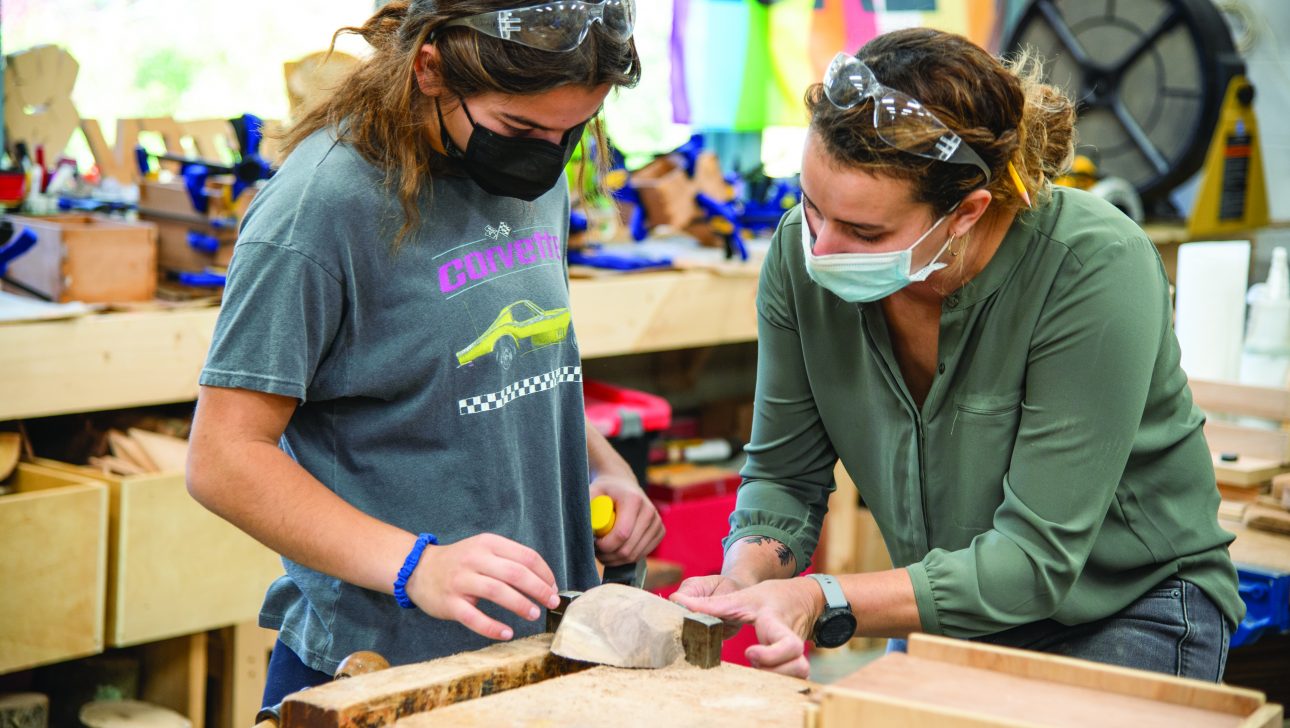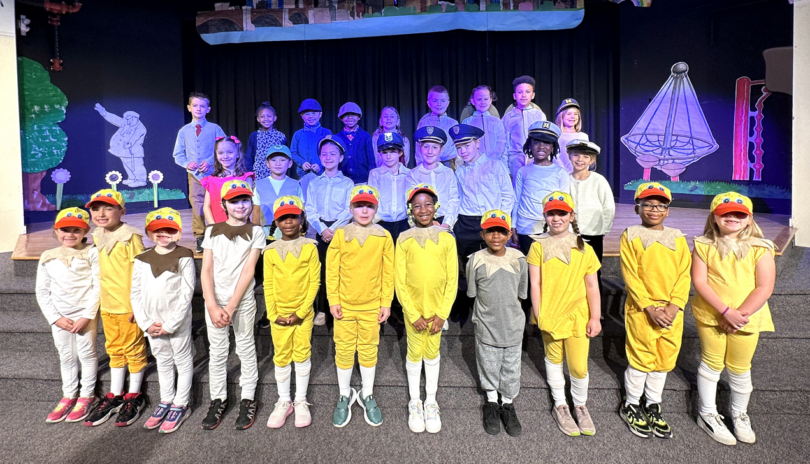When a student steps into DCD’s woodshop, whether they are four years old or fourteen, they can’t help but live our motto. While the focus on process over product has long been the philosophy of woodworking at DCD, especially under the tutelage of former woodworking teacher Gerry Clifford, Becca Levi, who joined the faculty in 2019, has added a whole new dimension to student learning in this much-loved creative space.
A big part of her teaching philosophy is the concept of “teaching artist behavior,” or TAB as it is known in the world of arts teaching, a school of thought around giving students the experience of being artists out in the real world.
“Instead of planning my lessons with precise steps and materials in mind, I give my students a framework and a host of materials and tools to choose from so that they have control and agency over the creative process,” she explains.
In essence, she creates an environment in which students can source their materials, set up their projects, and begin planning and creating. She has rearranged the shop to enable this process, allowing students to just go up to the wall and grab a saw or a spokeshave or whatever they need and choose their own piece of wood.
“I am very deliberately making the woodshop space into a little world in which the students can be true artists and independent learners,” says Becca.
She believes very strongly in the TAB process, particularly when it comes to woodworking, because it promotes intrinsic learning which is inherently “stickier.”
“Sure, I am going to give them lessons on tool usage and safety and a project framework, but when a student has agency in their project, the skills they develop and the lessons they take away in the moment will stay with them,” she explains. “Students will be more apt to build or attempt a project when they are at home or working outside of the DCD woodshop. They may not replicate exactly what they did here, but they will have the skills and will have exercised their creativity enough to attempt a project at home. And that’s exactly what I want to happen.”
Another aspect of the TAB process is learning how to take the initiative and risk in making a piece of your own. Becca encourages students to look critically at their work and think about both the utility and artistic aspects of their projects. How can they make it their own artistic piece? Should the surface be carved or smooth? Can they apply color in an interesting way?
Projects in the woodshop also have a curricular focus. When Becca first arrived here, she went on a listening tour, connecting with every classroom teacher to learn about what was happening in their classrooms and identifying opportunities to link their curricula with that of the woodshop. So in addition to developing technical, conceptual, and artistic skills, Becca is working to weave in an exploration of the historical, multicultural, or environmental aspects associated with a given project.
For example, third-grade students made kalimbas (thumb pianos) that hail from African cultures. Seeing how different African cultures made and used these special pianos inspired students in the design and creation of their own kalimbas. In second grade, they are going to be working on Native American toys and wooden structures, once again linking the work they do in the woodshop with the focus of one of their social studies units.
Students are also learning not to take for granted their access to the materials they use. Where does the wood come from? What’s the process by which it arrives here at DCD? Becca shows them a milled piece of wood and a birch log and they talk about how in the past, and still in many parts of the world, there’s no access to Home Depot or a lumber mill.
“I talk to the students about how lucky we are to have this piece of wood sanded and milled whereas not even 100 years ago people had to take an ax, fell a tree, and then use a two-man saw to have access to workable wood,” she says.
Becca’s energy and excitement about all the learning that can take place in the woodshop are contagious. She admits that sometimes it can get overwhelming to think about all the different directions she and her students can take. She also recognizes the power of the social and emotional aspects of making art that allows students to build confidence as they complete a difficult project or take a closer look at what they’ve built and see its utility.
“It’s pretty empowering for a student to know that they are capable of making a table that we sit at, a chair that we sit on, or carve a spoon with which they can eat,” explains Becca. “And there’s so much we can do to talk about equity, social and climate justice. I also try to work these issues into our curriculum where I can.”
While the learning in the woodshop will continue to focus on process, skill development, and character-building, Becca is excited to incorporate topical aspects of the contemporary world to this craft that has been around for thousands of years, all while sharing this very special DCD space.







